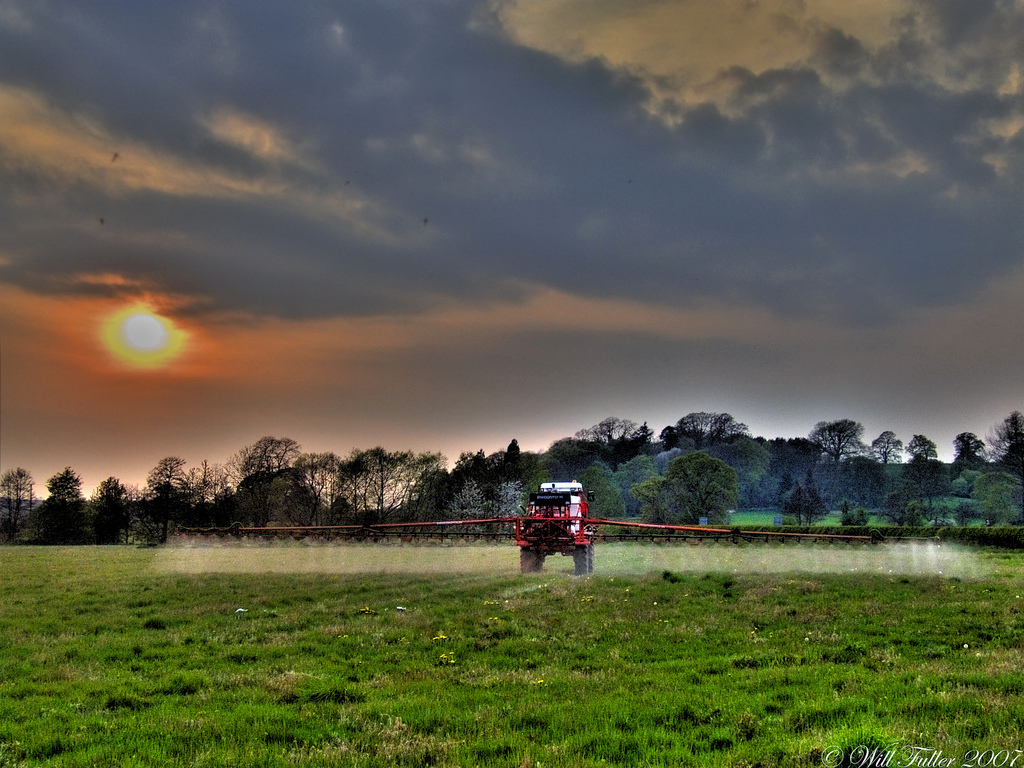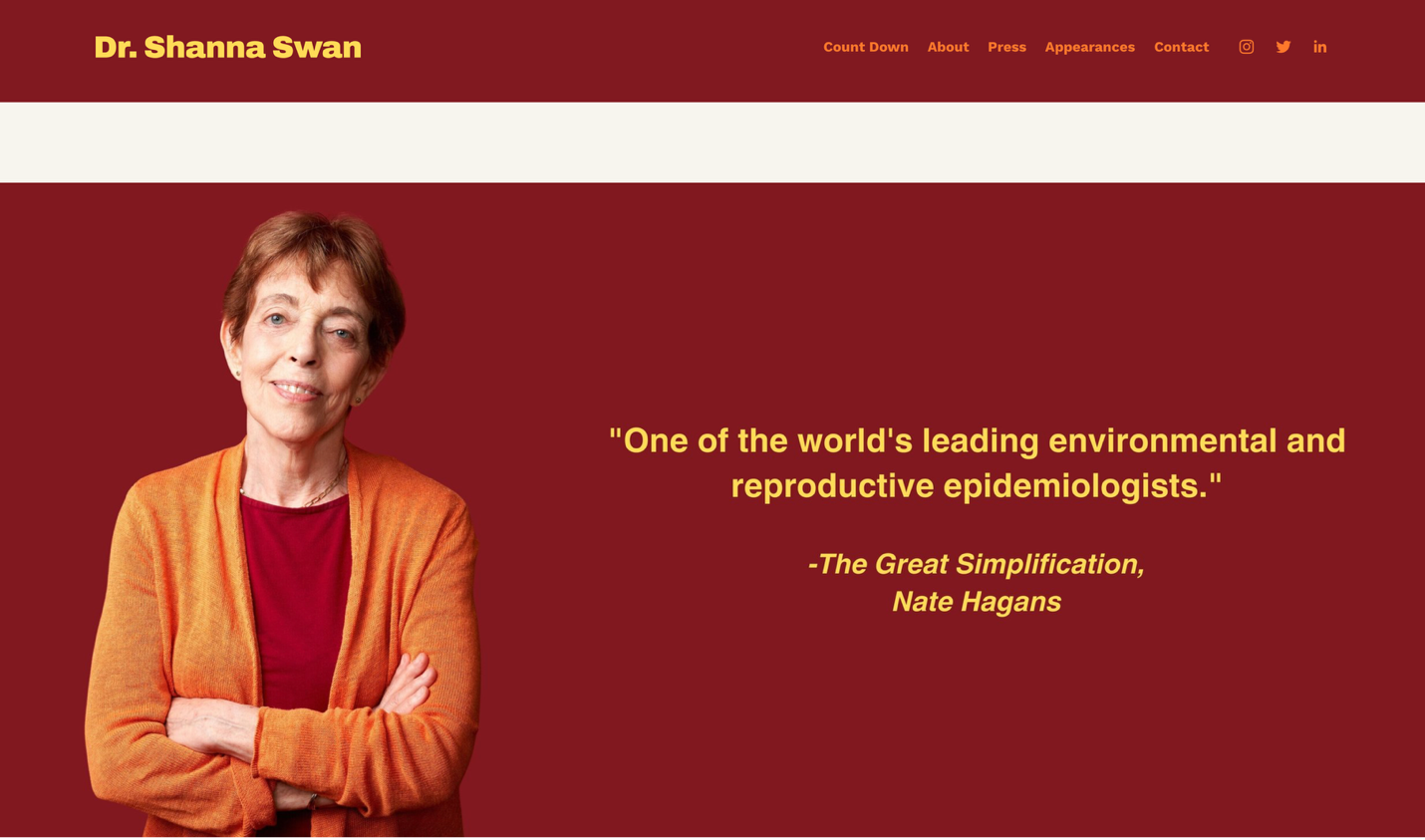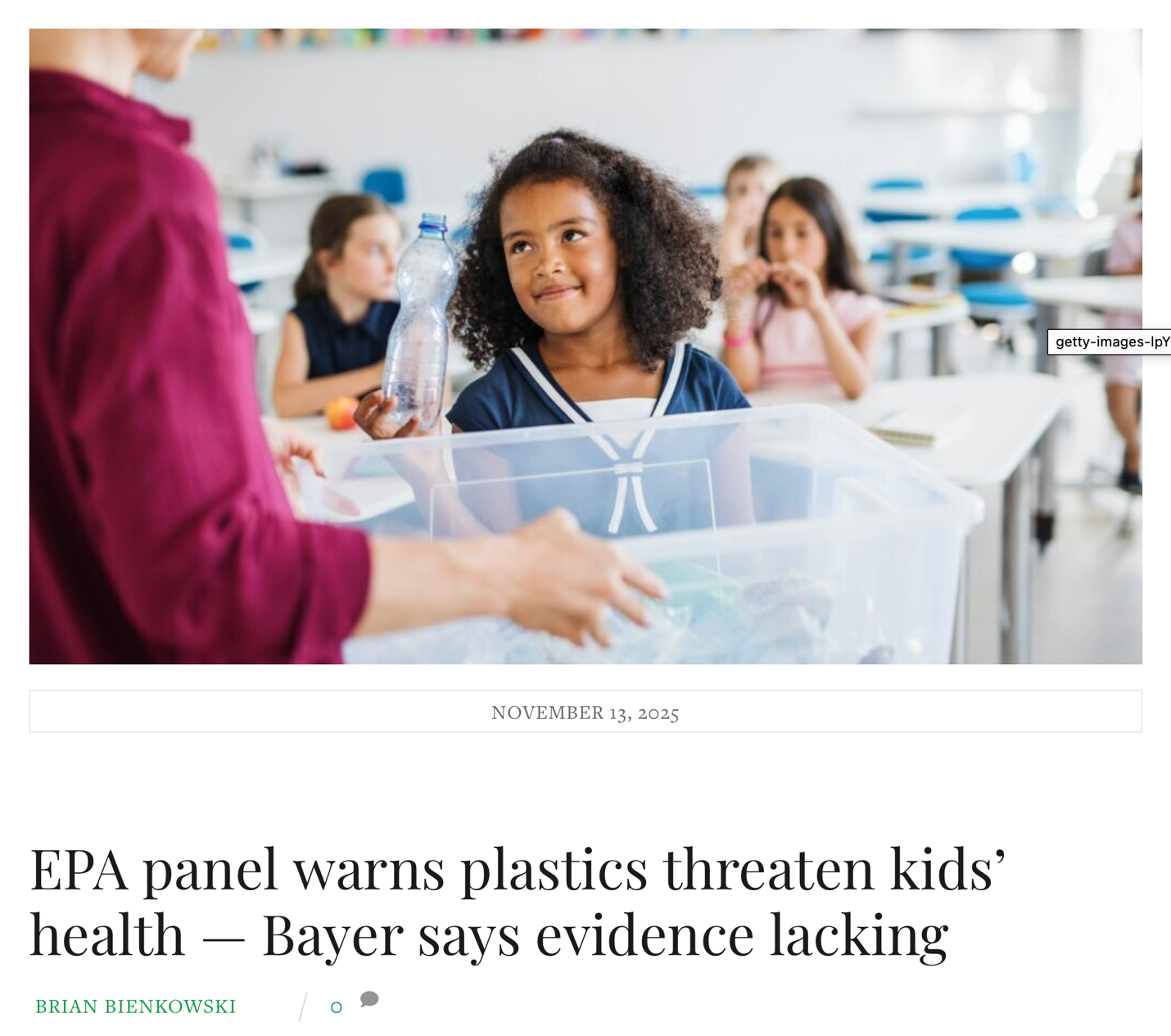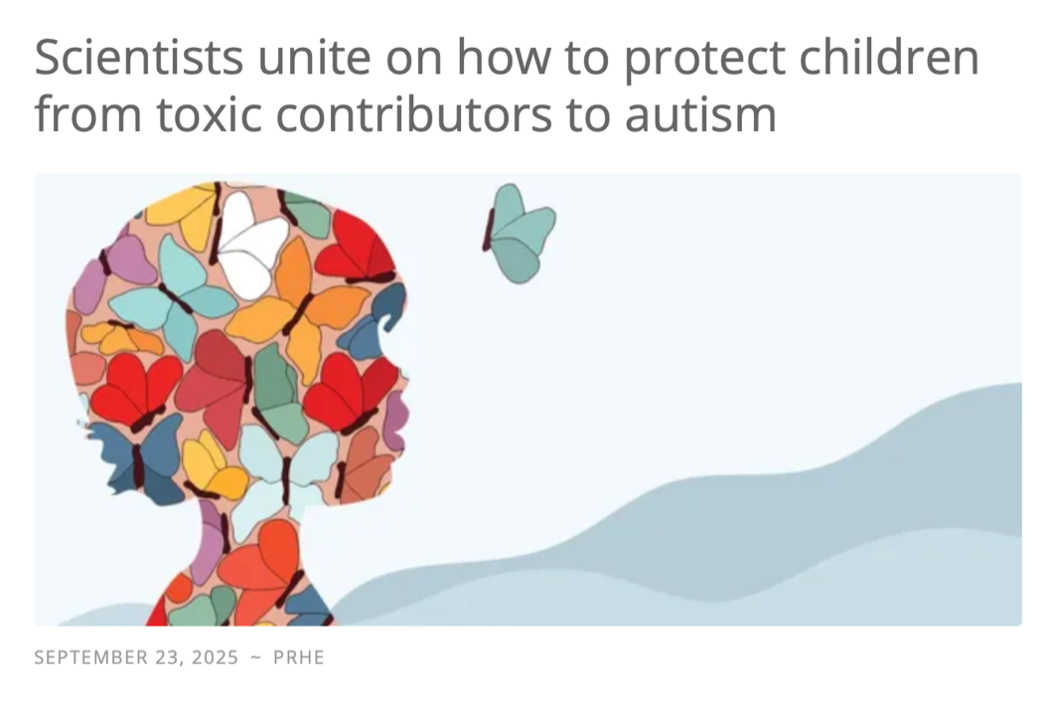 Industry hacks have long testified to glyphosate’s innocuous nature, protesting that it is safer than aspirin (Williams 2000) and even ingesting it to prove lack of harm, at least in the short term. Even very recently, The Huffington Post reported one of these people on the French cable channel Canal+ offering to drink a quart. However, when the reporter proposed getting Patrick Moore a glass of it from back stage, he retorted that he was “not an idiot” and stormed off stage (Visser 2015). I remember claims like these and even believed glyphosate (Round-Up) was probably not the worst thing around.
Industry hacks have long testified to glyphosate’s innocuous nature, protesting that it is safer than aspirin (Williams 2000) and even ingesting it to prove lack of harm, at least in the short term. Even very recently, The Huffington Post reported one of these people on the French cable channel Canal+ offering to drink a quart. However, when the reporter proposed getting Patrick Moore a glass of it from back stage, he retorted that he was “not an idiot” and stormed off stage (Visser 2015). I remember claims like these and even believed glyphosate (Round-Up) was probably not the worst thing around.
However, all along there was plenty of information in the literature implicating glyphosate in everything from kidney damage to cancer. Caroline Cox was writing about its acute and chronic toxicity in 1995: “It is striking that laboratory studies have identified adverse effects of glyphosate or glyphosate-containing products in all standard categories of toxicological testing. Two serious cases of fraud have occurred in laboratories conducting toxicology and residue testing” (1995). I have seen a steady stream of articles detailing the health hazards of glyphosate over the years.
Recently, an article in the journal Entropy pieced together abundant evidence implicating this most widely used herbicide. Glyphosate is now used in the U.S. 250 times more than in 1974, from 0.4 million kg to 113 million kg in 2014 (Landrigan & Benbrook 2015). One reason for its increase is the reprehensible practice of using glyphosate as a crop desiccant right before harvest, ensuring that much of the chemicals stays on the food right into production (Samsel & Seneff 2013). While the mode by which glyphosate affect plants, the shikimate pathway, used in the synthesis of certain amino acids, is absent from animals, it is present in gut bacteria, and certainly a great number of modern diseases have been linked to changes in gut bacteria, particularly obesity and Crohn’s Disease, but also including autism, which now afflicts 1 in 68 children born in the U.S. Gut bacteria are also involved in the immune system and detoxifying xenobiotics, or substances hostile to life (Samsel & Seneff 2013). Contrary to the common trope that glyphosate is less toxic than other pesticides, Samsel & Seneff argue that “glyphosate may rather be the most important factor in the development of multiple chronic diseases and conditions that have become prevalent in Westernized societies” (2013, p. 1443). Of course, it is not the only environmental toxin contributing to increased chronic disease, but it is one that should receive a great deal more attention.
Philip Landrigan, a Harvard-educated pediatrician at Mount Sinai, has repeated his call to stop allowing our children’s brains to be harmed by increasing exposure to various pesticides, including glyphosate, because of the harm it caused to cells. He describes the potential hazards of genetically-modified organisms (GMOs) because, as the National Academy of Sciences noted in reviews in 2000 and 2004, there is the potential to create allergens or toxins that were not inherent in the original food; the call for further assessment has gone unheeded (Landrigan & Benbrook 2015). But the ubiquitous use of the herbicides that accompany many of these crops, particularly glyphosate and 2,4–D, is a more likely threat than the GMOs themselves. Enlist Duo, developed to address the pesticide resistance developed by so-called “Frankenweeds,” uses both these toxic pesticides together. As Landrigan & Benbrook argue, the EPA’s determination that the two chemicals were not carcinogens was based on toxicological reports from the manufacturers themselves that were not peer-reviewed and did not include epidemiological data, endocrine studies, or studies that looked at epigenetic effects, all research that has emerged since the original studies were conducted in the 1980s and 90s (Landrigan & Benbrook 2015). There was also no consideration of the effects on children (Landrigan & Benbrook 2015).
As the science journal Nature, notes, Monsanto protested the exclusion of studies showing no harm from IARC’s review; but in fact, these studies were excluded because they were not peer-reviewed, were in fact produced by the industry itself (Cressey 2015). Research sponsored by industry, as with the tobacco industry, has shown a consistent bias in favor of – surprise, surprise – keeping that industry’s products on the market (Brown & Grossman 2015).
Finally, there is something being done about this. California recently required glyphosate to be labeled as “known to cause cancer” in the state’s database after it was declared a probable human carcinogen (the second highest category of risk) by the International Agency for Research on Cancer (IARC) (Guyton et al. 2015). The National Academy of sciences has – finally – convened a panel to assess the health hazards of GMO foods and the pesticides used to treat them. Considering that glyphosate is found in blood, urine, and breast milk, it is about time we started asking questions about the biological effects of this chemical. In defiance of the industry’s initial promise that genetically-modified plants could reduce such exposures, GMOs have only increased total pesticide use. Many countries in Europe have banned GMO foods and the toxic chemicals that usually accompany them. In fact, in Europe, the burden of proof on toxic chemicals is reversed from what it is in the U.S., where enough people must die and develop disease to show an elevated risk in the epidemiological data, where the chemicals, not the people, are considered innocent until proven guilty. Computer modeling by toxicologists in the U.S. has recently been shown to be rigged in the interests of industry, so whole categories of research are unlikely ever to show harm (Brown & Grossman 2015).
Glyphosate, the brainchild of Monsanto, is so widespread because it must be used lock-step with Monsanto’s genetically engineered “Round-Up Ready” corn and soybeans. Monsanto has launched a concerted campaign again GMO labeling, likely because their products – both genetically modified seeds and the chemicals used to treat them – depend on people not questioning the toxicity of either. It’s not just that Monsanto is resisting states labeling their products as GMO; they are also trying to get laws passed that would prohibit organic producers from labeling their products GMO-free. They worry, perhaps with some reason, that they may lose market share because of increasingly savvy consumers. Truth in labeling is supposed to be a basic consumer protection in this country, a protection we are steadily losing. This severe limitation on free speech will only enable an industry I would say is justly called “the evil empire” to continue to put others’ health at risk unopposed, without warning or notification. Because our Congress is in the pockets of Monsanto and other large agribusinesses, they passed this summer the perversely named “Safe and Accurate Food Labeling Act” (H.R. 1599), which actually prohibits states passing safe food labeling acts. Like chemical industries I have actually seen in action, going after little old me, Monsanto is stomping out grass-root activism to try to protect their products from regulation that is in the interest of consumers.
All of this is of course aside from ecological harm like the accidental decimation of the monarch butterfly population, as Bill Nye describes it. The widespread use of Round-up Ready Corn and Soy has had a terrible unpredicted consequence, resulting in the loss of 90% of the monarch population over the last few decades, and this from an intended effect of the chemicals, that they should kill as much milkweed as possible. This does not include the sizeable impact of other pesticides on other pollinators, like honeybees, neonicotinoids the chief culprits there.
What is most important right now it to act, and there are many groups that can help you do that, like Organic Consumers, which is helping sponsor the first validated public LC/MS/MS glyphosate testing of human urine, blood, and breast milk to establish rates of exposure, testing the USDA has said is too expensive (Organic Consumers 2015). Many scientists have called for the re-review of glyphosate in light of the new evidence. If glyphosate goes up for review and comments are possible, we need to act fast, since the comment period is often open for only 30-90 days. Otherwise, glyphosate will not likely be reviewed again until today’s toddlers are grown. A lawsuit and protests from scientists and activists recently resulted in the revocation of registration for Monsanto’s Enlist Duo. One of the very best things we can do to fight those systematically poisoning our children is to support those environmental groups working together to protect them: Earthjustice, Beyond Pesticides, Environmental Working Group, and the Pesticide Action Network North America, and the Midwest Pesticide Action Center, among others. These organizations now receive at least half of the charitable dollars my husband and I give because they are doing the same work we would do if we could start a non-profit. Direct action should also not be underestimated. You can also submit a comment directly to the EPA by searching pesticide names at http://www.regulations.gov/#!home The EPA even provides advice on writing effective comments at http://www2.epa.gov/sites/production/files/2014-04/documents/making-your-voice-heard.pdf Please, at least make some comment, where you can, in favor of protecting our children and ourselves.
How has it come to this? How is it that we allow industries to routinely poison our children on such a scale that childhood cancer is now the #1 disease killer of children, and autism affects 1 in 68 of our children? This travesty of justice testifies in part to the domination of our lives by enormous corporations, and to the unthinking allegiance and wealth we have rendered unto them. It also betrays a kind of perverse denial on our part; we would rather not know and hope for the best; we would rather suffer the health consequences than to bring those who systematically poison us out into the light.
References
Brown, V., & Grossman, E. (2015). Why the United States leaves deadly chemicals on the market. In These Times, November 2. Retrieved from http://inthesetimes.com/article/18504/epa_government_scientists_and_chemical_industry_links_influence_regulations
Centers for Disease Control and Prevention (CDC). (2015). Asthma surveillance data. Centers for Disease Control and Prevention (CDC). Retrieved from http://www.cdc.gov/asthma/asthmadata.htm
Cox, C. (1995). Glyphosate, Part 1: Toxicology. Journal of Pesticide Reform 15 (3): 14-19.
Cressey, D. (2015). Widely used herbicide linked to cancer. Nature, March 24. Retrieved from http://www.nature.com/news/widely-used-herbicide-linked-to-cancer-1.17181
Guyton K.Z., Loomis, D., Grosse, Y., El Ghissassi, F., Benbrahim-Tallaa, L., Guha, N., … Straif, K. (2015). Carcinogenicity of tetrachlorvinphos, parathion, malathion, diazinon, and glyphosate. The Lancet Oncology 16 (5): 490-91.
Landrigan, P.J., & Benbrook, C. (2015). GMOs, herbicides, and public health. New England Journal of Medicine 373: 693-95. Retrieved from http://www.nejm.org/doi/full/10.1056/NEJMp1505660?rss=searchAndBrowse
Organic Consumers Association. (2015). World’s first public testing for Monsanto’s glyphosate begins today. Organic Consumers, April 21. Retrieved from https://www.organicconsumers.org/press/world%E2%80%99s-first-public-testing-monsanto%E2%80%99s-glyphosate-begins-today
Samsel, A., & Seneff, S. (2013). Glyphosate’s suppression of Cytochrome P450 enzymes and amino acid biosynthesis by the gut microbiome: Pathways to modern diseases. Entropy 15: 1416-63. Retrieved from http://content.ebscohost.com.libweb.ben.edu/ContentServer.asp?T=P&P=AN&K=87326137&S=R&D=a9h&EbscoContent=dGJyMMTo50SeqLU4zOX0OLCmr02ep7RSsKe4SLCWxWXS&ContentCustomer=dGJyMPGuskquqLVMuePfgeyx44Dt6fIA
Visser, N. (2015). Monsanto advocate says Roundup is safe enough to drink, then refuses to drink it. The Huffington Post, March 27. Retrieved from http://www.huffingtonpost.com/2015/03/27/monsanto-roundup-patrick-moore_n_6956034.html
Williams, G.M., Kroes, R. Munro, I.C. (2000). Safety evaluation and risk assessment of the herbicide roundup and its active ingredient, glyphosate, for humans. Regulatory Toxicology Pharmacology 31: 117-65.












